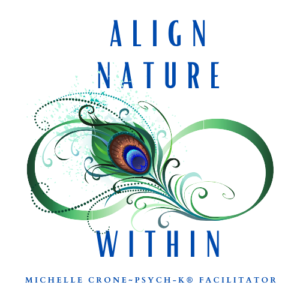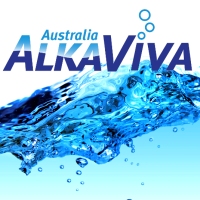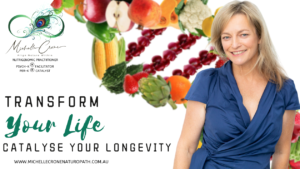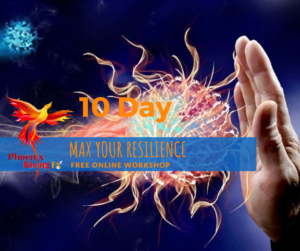WHAT IS OXIDATIVE STRESS?
Oxidative stress arises from the strong cellular oxidizing potential (Oxidation) of excess reactive oxygen species (ROS). We call these ROS simply, Free Radicals.
Free radicals are oxygen-containing molecules with an uneven number of electrons. The uneven number allows them to easily react with other molecules. Free radicals can cause large chain chemical reactions in your body because they react so easily with other molecules. These reactions are called oxidation.
Small amounts of oxidation are important as they help our body to host defence of pathogens. The problem is when we have too much oxidation or Free Radicals floating around in the body, this causes cell damage.
When a cell can no longer remove the source of the damage the cell dies. Too much cell death is called necrosis (the death of most or all of the cells in an organ or tissue due to disease, injury, or failure of the blood supply.)
TWO TYPES OF OXIDATIVE STRESS
There are two types of Oxidative Stress (Acute and Persistent) and both are occurring every day of our lives. Our job is to keep them at bay and not allow the damage to our DNA and rNA to get out of control causing degenerative and nasty cellular changes allowing cancer and other dis-ease states to manifest in our bodies.
Acute oxidative stress arises from a variety of situations, including lack of blood supply to a tissue due to acute inflammation from the bodies defence to free radical damage.
Persistent oxidative stress is widely accepted as one of the causes of most lifestyle-related diseases, cancer and the aging process.
GENETICS AND OXIDATIVE STRESS
Oxidative stress is also a concern for those with genes that may be variant or “switched off” when it comes to supporting the reduction of oxidative stress. We can now test for these genes independently, and if they are found to be variant, the best possible life changes in diet and water and other low oxidative stress measures can be put into place through rich nutrition programmes and online. Find out about gene testing to match your DNA with nutrition here.
SO HOW DO WE IMPROVE OUR DAILY INTAKE OF ANTIOXIDANTS
EAT FOODS RICH IN ANTIOXIDANTS

Plant foods are rich sources of antioxidants.
They are most abundant in fruits and vegetables, as well as other foods including nuts, wholegrains and some meats, poultry and fish.
Below are some sources of antioxidant rich foods.
- allium sulphur compounds– leeks, onions and garlic
- anthocyanins– eggplant, grapes and berries
- beta-carotene– pumpkin, mangoes, apricots, carrots, spinach and parsley
- catechins– red wine and tea
- copper– seafood, lean meat, milk and nuts
- cryptoxanthins– red capsicum, pumpkin and mangoes
- flavonoids– tea, green tea, citrus fruits, red wine, onion and apples
- indoles– cruciferous vegetables such as broccoli, cabbage and cauliflower
- isoflavonoids– soybeans, tofu, lentils, peas and milk
- lignans– sesame seeds, bran, whole grains and vegetables
- lutein– green, leafy vegetables like spinach, and corn
- lycopene– tomatoes, pink grapefruit and watermelon
- manganese– seafood, lean meat, milk and nuts
- polyphenols– thyme and oregano
- selenium– seafood, offal, lean meat and whole grains
- vitamin A – liver, sweet potatoes, carrots, milk, and egg yolks
- vitamin C – oranges, blackcurrants, kiwifruit, mangoes, broccoli, spinach, capsicum and strawberries
- vitamin E– vegetable oils (such as wheatgerm oil), avocados, nuts, seeds and whole grains
- zinc– seafood, lean meat, milk and nuts
- zoo chemicals– red meat, offal and fish. Also derived from the plants that animals eat.

Studies have found that molecular hydrogen (H2) has a role as an antioxidant in preventive and therapeutic applications.
H2 has advantages as a potential antioxidant without adverse effects: it is mild enough to affect ROS without damaging other cells and it has been shown that through electrolysis we can improve the antioxidant capacity in the water. One way to measure this is via an Oxidising Reduction Potential meter. (ORP meter) This measures the amount of potential hydrogen or pH.
Aim to drink between 7.5-9.5pH depending upon health conditions.
We have many reasons to be excited about the potential for understanding and reducing oxidative stress because fore armed is fore warned!
Michelle is a respected Nutrigenomic Naturopath based in Adelaide, South Australia. You can follow Michelle
on Instagram
@michelle_crone_naturopath
Facebook
Sign up to Michelle’s blogs at
https://michellecronenaturopath.com.au
 Water Expert – Nutritional Genomics – Mindset Transformational Coach and Naturopathic Practitioner Water Expert – Nutritional Genomics – Mindset Transformational Coach and Naturopathic Practitioner

Michelle is proud to be providing clients :
ALKAVIVA – THE PROVEN BEST-PERFORMING FILTRATION & ALKALINE HYDROGEN-RICH WATER IONIZERS.
ALL ALKAVIVA PRODUCTS OFFER:
Cleanest Filtration – Only AlkaViva has the confidence to test their filters using an independent US EPA-Certified lab. Find out more here
Proven Performance – Only AlkaViva has the confidence to test against other brands using a US EPA-Certified lab. Find out more here
Ionization Technology Leader – Cutting-edge technology, performance and durability from the world’s leading water ionizer manufacturer.
Durability – An ionizer’s performance can become compromised over time. Our ionizers and cleaning systems are light years ahead of the competition.
Greener Technology – Our ionizers are more efficient and so use less power than any other brand. Our water products replace the need for disposable plastic bottles
Call Michelle today and she will book a short complementary, professional chat with you, to help you find the best filtration system for your needs.
Call 0419166869 or email mlcrone@bigpond.com
To view the products click here top check out the machines but be sure to contact Michelle to see if there is a discount code during specials should you wish to make the best decision for yourself and family.
www.alkaviva.com.au/michellecrone |










